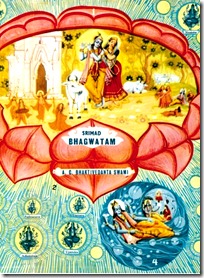தொல்காப்பியம் 1602 பாக்களால் ஆனது. இதன் உள்ளடக்கம்,
முதலாவதுஎழுத்ததிகாரம் தனிமொழியிலும்,புணர்மொழியிலும் உள்ள எழுத்துகளைப் பற்றிக் கூறுகிறது.
இரண்டாவதுசொல்லதிகாரம் மொழித்தொடர் (syntax) அமையும் பாங்கைச் சொல்கிறது.
மூன்றாவது பொருளதிகாரம் எழுதப்படும் நூலிலுள்ள வாழ்க்கைப் பொருளையும், அப்பொருள் சொல்லப்பட்டுள்ள யாப்பு, அணி முதலான பாங்குகளையும், தமிழ்மரபையும் விளக்குகிறது.
- எழுத்ததிகாரம்,
- சொல்லதிகாரம்,
- பொருளதிகாரம்
முதலாவதுஎழுத்ததிகாரம் தனிமொழியிலும்,புணர்மொழியிலும் உள்ள எழுத்துகளைப் பற்றிக் கூறுகிறது.
இரண்டாவதுசொல்லதிகாரம் மொழித்தொடர் (syntax) அமையும் பாங்கைச் சொல்கிறது.
மூன்றாவது பொருளதிகாரம் எழுதப்படும் நூலிலுள்ள வாழ்க்கைப் பொருளையும், அப்பொருள் சொல்லப்பட்டுள்ள யாப்பு, அணி முதலான பாங்குகளையும், தமிழ்மரபையும் விளக்குகிறது.
தொல்காப்பியம் என்பது இன்று கிகைக்கப்பெரும் மிகப் பழைய தமிழ் இலக்கண நூலாகும். இது இலக்கிய வடிவிலிருக்கும் ஓர் இலக்கான நூலாகும். இதை எழுதியவர் பெயர் தொல்காப்பியர் என்று தொல்காப்பிய பாயிரம் குறிப்பிடுகிறது. தொல்காப்பியத்தில் இடைச் செருகல்கள் உள்ளதாக அறிஞர்கள் கருதுகின்றனர். பழங்காலத்து நூலாக இருப்பினும், இன்றுவரை தமிழ் இலக்கண விதிகளுக்கு அடிப்படையான நூல் இதுவே. இந்த தொல்காப்பியத்தை முதல் நூலாகக் கொண்டு காலந்தோறும் பல வழிநூல்கள் தோன்றின.
தொல்காப்பியர் காலம்: தொல்காப்பியத்துக்குப் பாயிரம் தந்துள்ள புலவர் பனம்பாரனார் தொல்காப்பியர் காலத்தவர். அவர் தம் பாயிர உரையில் "ஐந்திரம்" நிறைந்த தொல்காப்பியன்' என்று குறிப்பிடு கிறார். "ஐந்திரம்" என்பது சமற்கிருத இலக்கணநூல். இது பாணினி எழுதிய சமற்கிருத இலக்கண நூலுக்குக் காலத்தால் முற்பட்டது. தொல்காப்பியர் காலத்தில் பாணினியம் தோன்றவில்லை. எனவே தொல்காப்பியர் பாணினிக்கு முந்திய நூலான ஐந்திரம் என்னும் நூலையும் அறிந்திருந்தார். தமிழில் இருந்த 'முந்துநூல்'(அகத்தியம்) கண்டிருந்தார். எனவே தொல்காப்பியர் பாணினியின் காலமாகச் சொல்லப்படும் கி.மு. நாலாம் நூற்றாண்டுக்கு முற்பட்டவர் என்பது தெளிவு.
ஐந்திரம், தொல்காப்பியம் ஆகிய நூல்களைப் பற்றிப் பர்னல் என்பவர் ஒப்பிட்டு ஆராய்ந்தார். இந்திரன் செய்தது ஐந்திரம் என்றனர். இந்த இந்திரன் சமணமதத்தைத் தோற்றுவித்த இந்திரன் என இவர் கொண்டார். விளைவு தொல்காப்பியம் சமணர் காலத்துக்குப் பிற்பட்டவர் தொல்காப்பியர் எனக் காட்டலானார். உண்மையில் ஐந்திரம் என்னும் நூல் ஐந்திரன் என்பவரால் இயற்றப்பட்டது என்பதே பொருத்தமானது. இதன் அடிப்படையில் பார்க்கும்போது பர்னல் விளக்கம் தொல்காப்பியர் காலத்தைக் கி.மு. நாலாம் நூற்றாண்டுக்கு முன்னதாக்கிவிடும்.
தொல்காப்பியம் பெயர் விளக்கம்:-தொல்காப்பியர் செய்தது தொல்காப்பியம். தொல்காப்பியம் செய்தவர் தொல்காப்பியர் என்னும் இருவேறு கருத்துக்கள் அறிஞர்களிடையே நிலவி வருகின்றன. தொல்காப்பிய நூல் முழுமைக்கும் உரை எழுதிய இளம்பூரணர், தொல்காப்பியர் கூறும் ஆகுபெயர்களில் ஒன்றான'வினைமுதல் உரைக்கும் கிளவி என்பதற்குத் 'தொல்காப்பியம்' என்னும் எடுத்துக்காட்டினைத் தந்துள்ளார். (2-3-31) இது தொல் காப்பியர் செய்தது தொல்காப்பியம் என்னும் கருத்தை வலியுறுத்துகிறது.
அகத்தியர் செய்தது அகத்தியம். பன்னிருவர் செய்தது பன்னிரு படலம். இந்திரன் செய்தது ஐந்திரம். காக்கை பாடினியார் செய்தது காக்கை பாடினியம். பல்காப்பியனார் செய்தது பல்காப்பியம். திருமூலர் செய்தது திருமூலம். இப்படித் தொல்காப்பியத்துக்கு முந்திய இலக்கண நூலும், தொல்காப்பியத்தை முதல்-நூலாகக் கொண்ட தமிழின் பழமையான இலக்கண நூல்களில் பலவும்,பிறவும் ஆசிரியராலேயே பெயர் பெற்றுள்ளன. இந்த வகையில் தொல்காப்பியர் செய்தது தொல்காப்பிம் எனக் கொள்வதே முறைமை. தொல்காப்பியப் பாயிரம் “புலம் தொகுத்தோன் … ஐந்திரம் நிறைந்த தொல்காப்பியன் எனத் தன் பெயர் தோற்றிப் பல்புகழ் நிறுத்த படிமையோன்”என்று கூறுகிறது. இதில் தொல்காப்பியன் புலம்(=இலக்கணம்) தொகுத்தான் என்பது தெளிவுபடுத்தப்பட்டுள்ளது.
அமைப்பு:
மூல ஓலையுடனான தொல்காப்பிய அமைப்பு.
தொல்காப்பியம் 1602 பாக்களால் ஆனது. இதன் உள்ளடக்கம்,எழுத்ததிகாரம்,சொல்லதிகாரம்,பொருளதிகாரம் என மூன்று அதிகாரங் களாகப் பிரிக்கப்பட்டுள்ளது. முதலாவது எழுத்ததிகாரம் தனிமொழியிலும், புணர் மொழியிலும் உள்ள எழுத்துகளைப் பற்றிக் கூறுகிறது. இரண்டாவது சொல்லதிகாரம் மொழித்தொடர் (syntax) அமையும் பாங்கைச் சொல்கிறது. மூன்றாவது பொருளதிகாரம் எழுதப்படும் நூலிலுள்ள வாழ்க்கைப் பொருளையும், அப்பொருள் சொல்லப்பட்டுள்ள யாப்பு, அணி முதலான பாங்குகளையும், தமிழ்மரபையும் விளக்குகிறது.
தோற்றம்: தொல்காப்பியப் பாயிரம் இவரை:"ஐந்திரம்" நிறைந்த தொல்காப்பியன் எனத் தன் பெயர் தோற்றிப் பல்புகழ் நிறைந்த படிமையோன்" என்று குறிப்பிடுகிறது. தொல்காப்பியர் 'புலம்'தொகுத்தார் என்றும் தொல்காப்பியப் பாயிரத்தில் புலவர் "பனம்பாரனார்"குறிப்பிடுகிறார். புலம் என்றும் புலன் என்றும் நாம் அறிவுக்கு அடிப்படையாக அமைந்துள்ள நிலை களங்களைக் குறிப்பிடுகிறோம். அது போல மொழிக்கு அடிப்படையாக அமைந்துள்ள எழுத்து முதலான களங்களைக் காட்டுவது புலம் ஆகும். ஆகவே தொல்காப்பியர் புலம் தொகுத்தார் ஆனார். புலம் என்னும் சொல் இலக்கணத்தைக் குறிக்கும். இலக்கணம் என்னும் சொல்லும் தூய தமிழ்ச்சொல்லே.
தொல்காப்பியர் பற்றி வேறு தனிப்பட்ட தகவல்கள் அதிகம் காணப்படவில்லை. தொல்காப்பிய ஆசிரியர் சமணர் என்று சிலரும் பிராமணர் என்று சிலரும் குறிப்பிட்டாலும், வேறு சிலர் இது பலரால் பல்வேறு காலங்களில் எழுதப்பெற்ற நூல் என்றே நம்புகின்றனர். தி.பொ.மீனாட்சி சுந்தரம்,இலக்குவனார் போன்றவர்கள் இந்நூல் கி.மு 700 ஆம் ஆண்டளவில் ஆக்கப்பட்டதாகக் கருதினார்கள். வேறு சிலர் இதன் காலத்தை கி.மு 500-க்குச் சிறிது முன் பின்னாகக் கணிப்பிட்டார்கள்.
சென்னைப் பல்கலைக் கழகத்தில் தமிழ் ஆராய்ச்சித் துறைத் தலைவராகப் பணியாற்றிய எஸ். வையாபுரிப் பிள்ளையும் வேறு சில வெளிநாட்டு அறிஞர்களும் தொல்காப்பியத்தின் காலத்தை மேலும் பின் தள்ளி கி.பி 3 ஆம் நூற்றாண்டு என்றனர். தொல்காப்பியம் பல ஆசிரியர்கள் கொண்டது என்போரின் கருத்தோ, கி.மு.3-ஆம் நூற்றாண்டில் தொடங்கப்பெற்று கி.பி. 5-ஆம் நூற்றாண்டு வரை இந்நூல் எழுதப்பெற்றது என்பதாகும். எனினும், இது கிறிஸ்துவுக்கு முற்பட்டது என்பதே பெரும் பாலானவர்களின் கருத்தாகும்.
எழுத்ததிகாரம்: எழுத்ததிகாரத்தில் 9 இயல்கள் உள்ளன.
எழுத்ததிகாரத்தில் சொல்லப்படும் செய்திகள்: முதலாவதாக உள்ள நூன்மரபு என்னும் இயலில் தமிழ் மொழியிலுள்ள எழுத்துக்களைப் பற்றிய செய்திகள் உள்ளன. எழுத்துக்களின்தொகுப்புப்பெயர்கள், எந்த எழுத்தோடு எந்த எழுத்து சேரும் என்பன போன்ற செய்திகள் இதில் சொல்லப்படுகின்றன. இரண்டாவதாகஉள்ள மொழிமரபு என்னும் இயலில் சார்பெழுத்துக்களைப் பற்றிய விளக்கமும்,சொல் தொடங்கும் எழுத்துக்கள், சொல்லில் முடியும் எழுத்துக்கள் பற்றிய செய்திகளும் உள்ளன. மூன்றாவதாக உள்ள பிறப்பியலில் எழுத்துக்களின் ஒலி எவ்வாறு எந்தெந்த உறுப்புகளில் பிறக்கும் என்னும் செய்திகள் சொல்லப்படுகின்றன. நான்காவதாக உள்ள புணரியலில் நின்ற சொல்லின் இறுதி எழுத்தோடு வருகின்ற மொழியின் முதலெழுத்து எவ்வாறு புணரும் என்று விளக்கப் படுகிறது. இயல்பு, திரிபு,சாரியை பெறுதல் முதலானவை சொற்கள் புணரும்போது நிகழும் பாங்கு இதில் கூறப்படுகிறது. ஐந்தாவதாக உள்ள தொகைமரபு என்னும் இயலில் வேற்றுமைப் புணர்ச்சி, வேற்றுமை அல்லாத அல்வழிப் புணர்ச்சி முதலானவை விளக்கப்படுகின்றன.
ஆறாவதாக உள்ள உருபியலில் எந்தெந்த எழுத்தின் இறுதியில் எந்தெந்த சாரியைகள் இணைந்து புணரும் என்று விளக்கப்படுகிறது. ஏழாவதாக உள்ள உயிர்மயங்கியலில், உயிரெழுத்தில் முடியும் நிலைமொழி புணரும் பாங்கு சொல்லப்படுகிறது. எட்டாவதாக உள்ள புள்ளிமயங்கியலில் மெய்யெழுத்தில் முடியும் நிலைமொழி புணரும் பாங்கு சொல்லப்படுகிறது. ஒன்பதாவதாகஉள்ள குற்றியலுகரப் புணரியலில் குற்றியலுகரத்தில் முடியும் நிலைமொழி புணரும் பாங்கு சொல்லப் படுகிறது. இப்படி எழுத்து, மொழி(word),புணர்மொழி(combination of words) ஆகிய மொழிக்கூறுகள் எழுத்ததிகாரத்தில் விளக்கப்படுகின்றன.
சொல்லதிகாரம்: சொல்லதிகாரத்தில் 9 இயல்கள் உள்ளன. அவையாவன: 1.கிளவியாக்கம் - (கிளவியாக்கச் செய்திகள்), 2. வேற்றுமை இயல் (வேற்றுமையியல் SEITHIKAL), 3. வேற்றுமை மயங்கியல் (வேற்றுமை மயங்கியல் செய்திகள்), 4.விழி மரபு(விளிமரபுச் SEITHIKAL), 5. பெயரியல் (பெயரியல் செய்திகள்), 6. வினை இயல் (வினையியல் செய்திகள்), 7. இடையியல் - (இடைச்சொல் அகரவரிசைத் தொகுப்பும் விளக்கமும்), 8.உயிரியல் - (உரிச்சொல் அகரவரிசைத் தொகுப்பும் விளக்கமும்), 9. எச்சவியல் - (எச்சவியல் செய்திகள்).
சொல்லதிகாரத்தில் சொல்லப்படும் செய்திகள்: முதலாவது கிளவியாக்கம் என்னும் இயலில் தமிழ்ச் சொற்றொடர் வாக்கியமாக அமையும் பாங்கு கூறப்படுகிறது. இரண்டாவது வேற்றுமை யியலில் வேற்றுமை உருபுகள் இன்னின்ன கருத்துக்களைப் புலப்படுத்திக்கொண்டு சொற்றொடராக அமையும் என்பது விளக்கப்படுகிறது. மூன்றாவது வேற்றுமை மயங்கியலில் 2, 3, 4, 5, 6, 7 வேற்றுமை உருபுகள் உருவில் திரிந்தும், பொருளில் வேறுபட்டும் நிற்கும் இடங்கள் எவை என விளக்கப் படுகிறது. நான்காவது விளிமரபு என்னும் இயலில் 8-ஆம் வேற்றுமையாக எந்தப் பெயர்ச்சொல் எவ்வாறு மாற்றம் கொள்ளும் என்பது விளக்கப்படுகிறது. ஐந்தாவது பெயரியலில் பெயர்ச்சொற்கள் தோன்றுமாறும், அவை ஒருமை, பன்மை என்னும் எண்ணைப் புலப்படுத்தும்போதும், தன்மை, முன்னிலை, படர்க்கை என்னும் இடத்தைப் புலப்படுத்தும்போதும் எவ்வாறு அமையும் என்பது விளக்கப்படுகிறது.
ஆறாவதுவினையியலில் வினைச்சொற்கள் காலம் காட்டும் பாங்கும், ஐம்பால் மூவிடங்களில் ஈறுகள் கொள்ளும் பாங்கும், எச்சங்களாகத் திரியும் பாங்கும் விளக்கப்படுகின்றன. ஏழாவது இடையியலில் பெயரையும் வினையையும் கூட்டுவிக்க இடையில் வந்தமையும் இடைச்சொற்கள் எடுத்துக்காட்டப்பட்டு விளக்கப்பட்டுள்ளன. எட்டாவது உரியியலில் பெயருக்கும், வினைக்கும் உரிமை பூண்ட உரிச்சொறகள் எடுத்துக் காட்டப்பட்டு அவை உணர்த்தும் பொருள்கள் இவை என்பதும் சொல்லப்படுகிறது.
ஒன்பதாவது எச்சவியலில்: இயற்சொல், திரிசொல், திசைச்சொல், வடசொல் என்னும் பாகுபாடுகளும், பெயரெச்சம், வினையெச்சம், சொல்லெச்சம் பிரிநிலையெச்சம், எதிர்மறை எச்சம், ஒழியிசை எச்சம், உம்மை எச்சம், என-என்னும் எச்சம் முதலானவை பற்றிய விளக்கங்களும், ஈ, தா, கொடு ஆகிய சொற்களின் சிறப்புப்பொருள்களும், இடக்கரடக்கல், குறைசொற்கிளவி பற்றிய விளக்கங்களும், காலமயக்கம், ஒருமை-பன்மை மயக்கம் பற்றிய பல்வகை மொழிக்கூறுகளும் விளக்கப்பட்டுள்ளன. இவற்றுக்கு இடையே நிரல்நிறை,சுண்ணம், அடிமறி-மாற்று, மொழிமாற்று ஆகிய செய்யுளின் பொருள்கோள் வகை புகுந்துள்ளது விந்தையே. மொத்தத்தில் சொல்லதிகாரம் மொழியின் வாக்கிய அமைப்பைக் (Syntax) கூறுகிறது எனலாம்.
பொருளதிகாரம்: அகத்திணையியல், புறத்திணையியல், களவியல், பொருளியல், மெய்ப்பாட்டியல், உவமவியல், செய்யுளியல், மரபியல் ஆக 9 வகை இயல்கள் உள்ளன.
பொருளதிகாரத்தில் சொல்லப்படும் செய்திகள்: பொருளதிகாரம் தொல்காப்பியம் எழுத்து, சொல், பொருள் என்று 3 அதிகாரங்களாகப் பகுக்கப்பட்டுள்ளது. எழுத்ததிகாரமும், சொல்லதிகாரமும் தமிழ்மொழியின் இயல்பைக் கூறுகின்றன.
முதலாவதாக உள்ள அகத்திணையியல்,புறத்திணையியல் ஆகியவை முறையே அகத்திணைகள் ஏழையும், புறத்திணைகள் ஏழையும் விளக்குகின்றன. மூன்றாவதாகஉள்ள களவியலும், நான்காவதாக உள்ள கற்பியலும் அகத்திணையின் உட்பகுப்பு விளக்கங்கள். ஐந்தாவதாக உள்ள பொருளியல் அகப்பாடல் களுக்குப் பொருள் காணும் முறைமையை விளக்குகிறது. ஆறாவதாக உள்ள மெய்ப்பாட்டியல் அகவொழுக்கத்திலும், புறவொழுக்கத்திலும் புலப்படும் மெய்ப்பாடுகளைக் கூறுகிறது. பெய்ப்பாடு என்பது உள்ளத்து உணர்வுகள் உடலில்(மெய்யில்) வெளிப்படுவது.
ஏழாவதாக உள்ள உவம இயல் வாய்மொழியில் பொருளை வெளிப்படுத்தும் பாங்கை விளக்குகிறது. எட்டாவதாக உள்ள செய்யுளியல் அகச் செய்திகளையும் புறச் செய்திகளையும் பண்டைய பாடல்களும், நூல்களும் எவ்வாறு புலப்படுத்தின என்பதை விளக்குகிறது. ஒன்பதாவதாக உள்ள மரபியலில் உயிரினங்களின் பாகுபாடும், அவற்றின் இளமை, ஆண், பெண் பாகுபாட்டு வழக்குப் பெயர்களும் விளக்கப்படுகின்றன. அத்துடன் ஓரறிவு உயிர்களை மரம் என்றும், புல் என்றும் பாகுபடுத்தி அவற்றின் இலை, காய்,பழம், முதலானவற்றிற்கு வழங்கப்படும் பெயர்களும் சுட்டப்படுகின்றன. நிலம்,தீ, நீர், வளி, விசும்பு என்னும் வரிசையில் ஐந்து பூதப்பொருள்களும் சுட்டப்படுகின்றன.
உயிரினங்களின் இளமை, ஆண், பெண் ஆகியவற்றை விளக்கிய பின்னர், ஓரறிவு உயிரினங்களை விளக்கியிருப்பதற்கு முன்னர்,இடைப்பகுதியில், மக்களை அந்தணர், அரசர், வைசியன், வேளாண் மாந்தர் என்னும் பாகுபாடு, நிரல் மாறி உள்ளதால் இந்தப் பாகுபாட்டைப் பிற்கால இடைச்செருகல் என்று அறிஞர்கள் கருதுகின்றனர். மேலும் மரபியலுக்குப் புறனடையாக அமைந்துள்ள நூற்பாக்களுக்குப் பின்னர் ஓர் இணைப்பைப் போல் நூல், உரை, உத்தி பற்றிய பாகுபாடுகள் பிற்காலத்து 13ஆம் நூற்றாண்டு நன்னூலார் பாங்கில் அமைந்துள்ளன.
http://pm.tamil.net/pub/pm0100/tolkap.pdf
தொல்காப்பியம் எழுதப்பட்ட ஓலைச்சுவடி
ஏழாவதாக உள்ள உவம இயல் வாய்மொழியில் பொருளை வெளிப்படுத்தும் பாங்கை விளக்குகிறது. எட்டாவதாக உள்ள செய்யுளியல் அகச் செய்திகளையும் புறச் செய்திகளையும் பண்டைய பாடல்களும், நூல்களும் எவ்வாறு புலப்படுத்தின என்பதை விளக்குகிறது. ஒன்பதாவதாக உள்ள மரபியலில் உயிரினங்களின் பாகுபாடும், அவற்றின் இளமை, ஆண், பெண் பாகுபாட்டு வழக்குப் பெயர்களும் விளக்கப்படுகின்றன. அத்துடன் ஓரறிவு உயிர்களை மரம் என்றும், புல் என்றும் பாகுபடுத்தி அவற்றின் இலை, காய்,பழம், முதலானவற்றிற்கு வழங்கப்படும் பெயர்களும் சுட்டப்படுகின்றன. நிலம்,தீ, நீர், வளி, விசும்பு என்னும் வரிசையில் ஐந்து பூதப்பொருள்களும் சுட்டப்படுகின்றன.
உயிரினங்களின் இளமை, ஆண், பெண் ஆகியவற்றை விளக்கிய பின்னர், ஓரறிவு உயிரினங்களை விளக்கியிருப்பதற்கு முன்னர்,இடைப்பகுதியில், மக்களை அந்தணர், அரசர், வைசியன், வேளாண் மாந்தர் என்னும் பாகுபாடு, நிரல் மாறி உள்ளதால் இந்தப் பாகுபாட்டைப் பிற்கால இடைச்செருகல் என்று அறிஞர்கள் கருதுகின்றனர். மேலும் மரபியலுக்குப் புறனடையாக அமைந்துள்ள நூற்பாக்களுக்குப் பின்னர் ஓர் இணைப்பைப் போல் நூல், உரை, உத்தி பற்றிய பாகுபாடுகள் பிற்காலத்து 13ஆம் நூற்றாண்டு நன்னூலார் பாங்கில் அமைந்துள்ளன.
மொத்தத்தில் பொருளதிகாரம் தமிழ்மக்களின் வாழ்வியலையும், தமிழ்ப் பாடல்களின் அமைதியையும் விளக்குகிறது எனலாம்.
தொல்காப்பியத்திற்கு உரை எழுதியவர்கள்: தொல்காப்பிய ஆறு பண்டை உரையாசிரியர்கள்:
இளம்பூரணர், பேராசிரியர், செனாவரியர், நச்சினார்கினியர், தெய்வச்சிலையார், கல்லாடனார் ஆவார்கள்.
மேலதிக தகவல்களுக்கு காண்க: தொல்காப்பியம்:http://tawp.in/r/2wz இளம்பூரணர், பேராசிரியர், செனாவரியர், நச்சினார்கினியர், தெய்வச்சிலையார், கல்லாடனார் ஆவார்கள்.
http://pm.tamil.net/pub/pm0100/tolkap.pdf
126 பக்கங்களில்
இந்த தொல்காப்பிய நூலினை நமக்கு மின்னூலாக்கி கொடுத்துள்ள மதுரை தமிழ்
இலக்கிய மின்தொகுப்புத் திட்டத்தின் கீழ் நமக்கு வழங்கிய கூட்டு முயற்சி
குழுமத்திற்கு மிக்க வந்தனங்களுடன் தொல்காப்பிய ஆசிரியர் தொல்காப்பியரின்
ஏனைய குறிப்புக்களை காண்போமாக!!!
அன்புடன் கே எம் தர்மா...
அன்புடன் கே எம் தர்மா...

 “He who meditates on the Supreme Personality of Godhead, his mind constantly engaged in remembering Me, undeviated from the path, he, O Partha [Arjuna], is sure to reach Me.” (Lord Krishna, Bhagavad-gita, 8.8)
“He who meditates on the Supreme Personality of Godhead, his mind constantly engaged in remembering Me, undeviated from the path, he, O Partha [Arjuna], is sure to reach Me.” (Lord Krishna, Bhagavad-gita, 8.8) With the technology available today, you can go back thirty years in time very quickly. Just fire up a movie or a television show that you used to watch a long time ago and immediately you can go back to that time in your life. “Wow, I was here during such and such time. Life was so much simpler back then. Too bad there is no way to go back.” Another emotion that can result is sadness, wherein you realize how quickly things change. “Wow. So many years have passed and what has actually been made of those years? How quickly time passes, and yet we are not advancing at all. What is the point to our existence?”
With the technology available today, you can go back thirty years in time very quickly. Just fire up a movie or a television show that you used to watch a long time ago and immediately you can go back to that time in your life. “Wow, I was here during such and such time. Life was so much simpler back then. Too bad there is no way to go back.” Another emotion that can result is sadness, wherein you realize how quickly things change. “Wow. So many years have passed and what has actually been made of those years? How quickly time passes, and yet we are not advancing at all. What is the point to our existence?” The Vedas, though containing information presented in the most ancient language, Sanskrit, describe the Supreme Personality of Godhead
The Vedas, though containing information presented in the most ancient language, Sanskrit, describe the Supreme Personality of Godhead  Why is it necessary to worship? Rasa, or the sweet taste resulting from personal interaction, is what the living being craves. Depending on the life form’s particular outward manifestation, the interactions have can specific natures. In the advanced animal species, there are the tastes of association through conjugal love, friendship and parenthood. In the human species, the rasas come from so many different outlets, all of which involve service. Just as the heat and light we see around us are rooted in the supremely powerful sun, the tastes that are sought out show that the internal sun, the soul, craves delightful association, the sweetness of transcendental interaction.
Why is it necessary to worship? Rasa, or the sweet taste resulting from personal interaction, is what the living being craves. Depending on the life form’s particular outward manifestation, the interactions have can specific natures. In the advanced animal species, there are the tastes of association through conjugal love, friendship and parenthood. In the human species, the rasas come from so many different outlets, all of which involve service. Just as the heat and light we see around us are rooted in the supremely powerful sun, the tastes that are sought out show that the internal sun, the soul, craves delightful association, the sweetness of transcendental interaction. Vedic literature, compiled by God’s direct representatives, addresses all of these issues. Not only are the personal features of the Lord enumerated, but so are His pastimes, His wishes, and His teachings. The best presentation of His teachings is found in the famous Bhagavad-gita, a poem sung on the battlefield of Kurukshetra by Krishna Himself. The Lord’s qualities are sung throughout the original Vedas themselves, which consist of hymns and songs. The Puranas, and especially the Bhagavata Purana, describe Krishna’s activities. Through stories of His personal descents to earth, the lessons learned from them, and the firsthand accounts of the people who interacted with Him, one can become very familiar with God. The
Vedic literature, compiled by God’s direct representatives, addresses all of these issues. Not only are the personal features of the Lord enumerated, but so are His pastimes, His wishes, and His teachings. The best presentation of His teachings is found in the famous Bhagavad-gita, a poem sung on the battlefield of Kurukshetra by Krishna Himself. The Lord’s qualities are sung throughout the original Vedas themselves, which consist of hymns and songs. The Puranas, and especially the Bhagavata Purana, describe Krishna’s activities. Through stories of His personal descents to earth, the lessons learned from them, and the firsthand accounts of the people who interacted with Him, one can become very familiar with God. The Similarly, a person dedicated to meat-eating,
Similarly, a person dedicated to meat-eating,  The Vedas reveal that this unique position of the soul continues after death. The soul was also in the same constitutional position prior to the present birth. In this way we see that
The Vedas reveal that this unique position of the soul continues after death. The soul was also in the same constitutional position prior to the present birth. In this way we see that  To reach that end, to find your true destiny, simply chant the names of God, “
To reach that end, to find your true destiny, simply chant the names of God, “